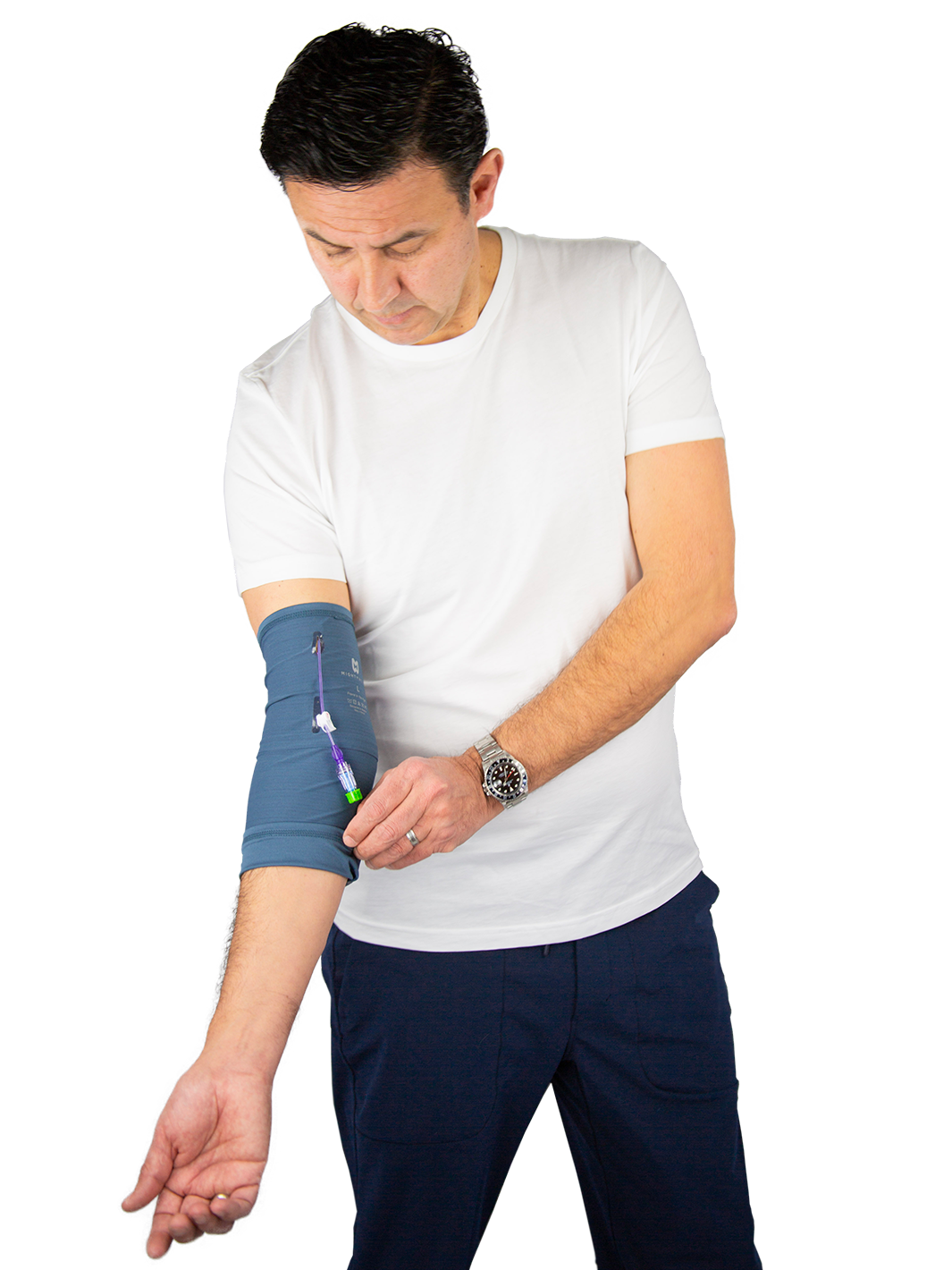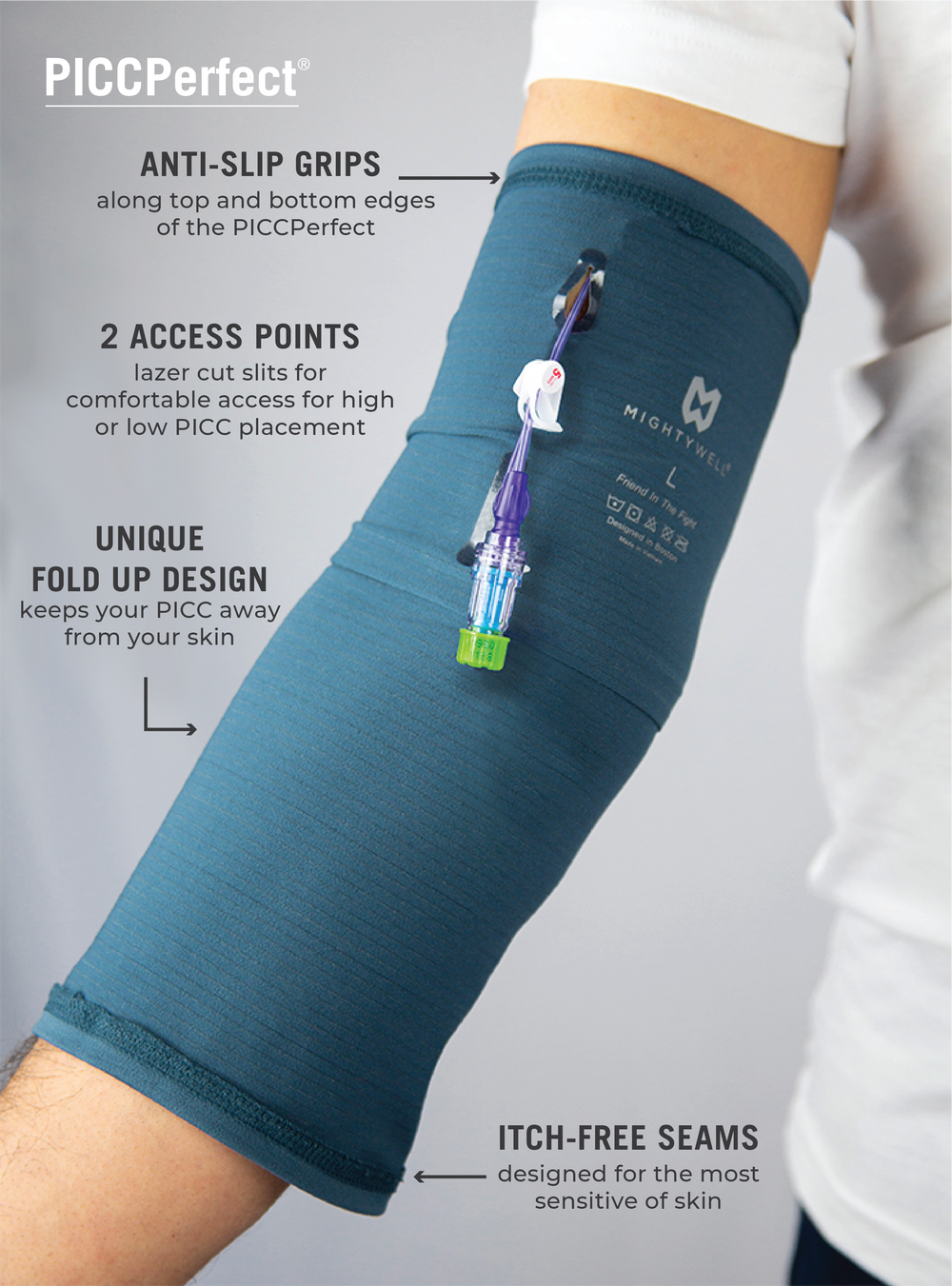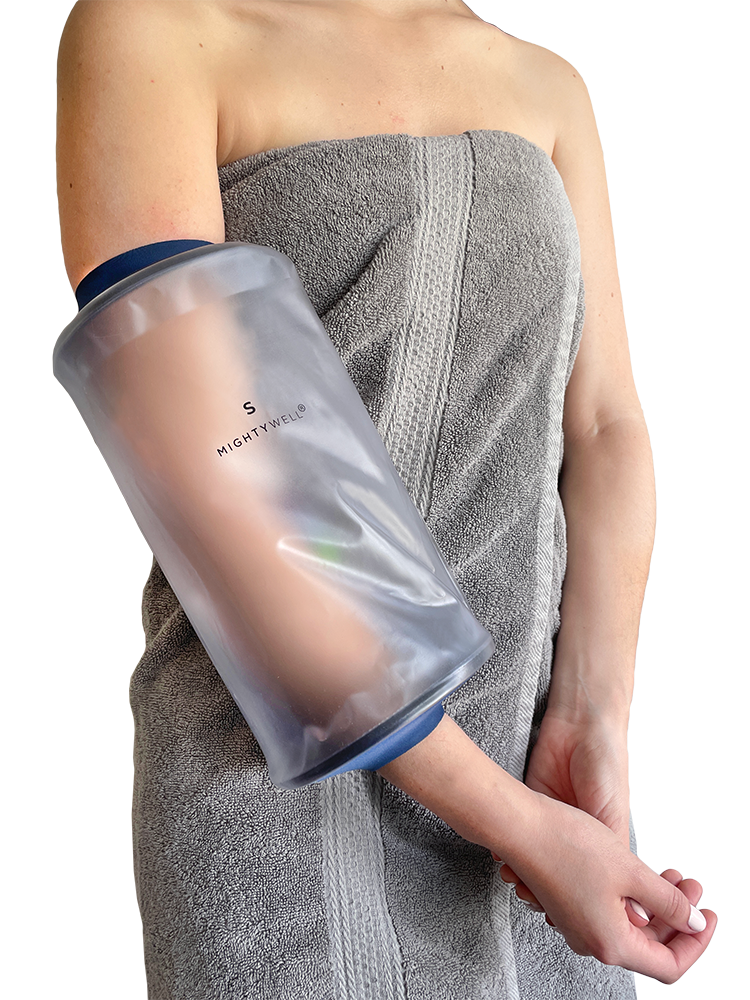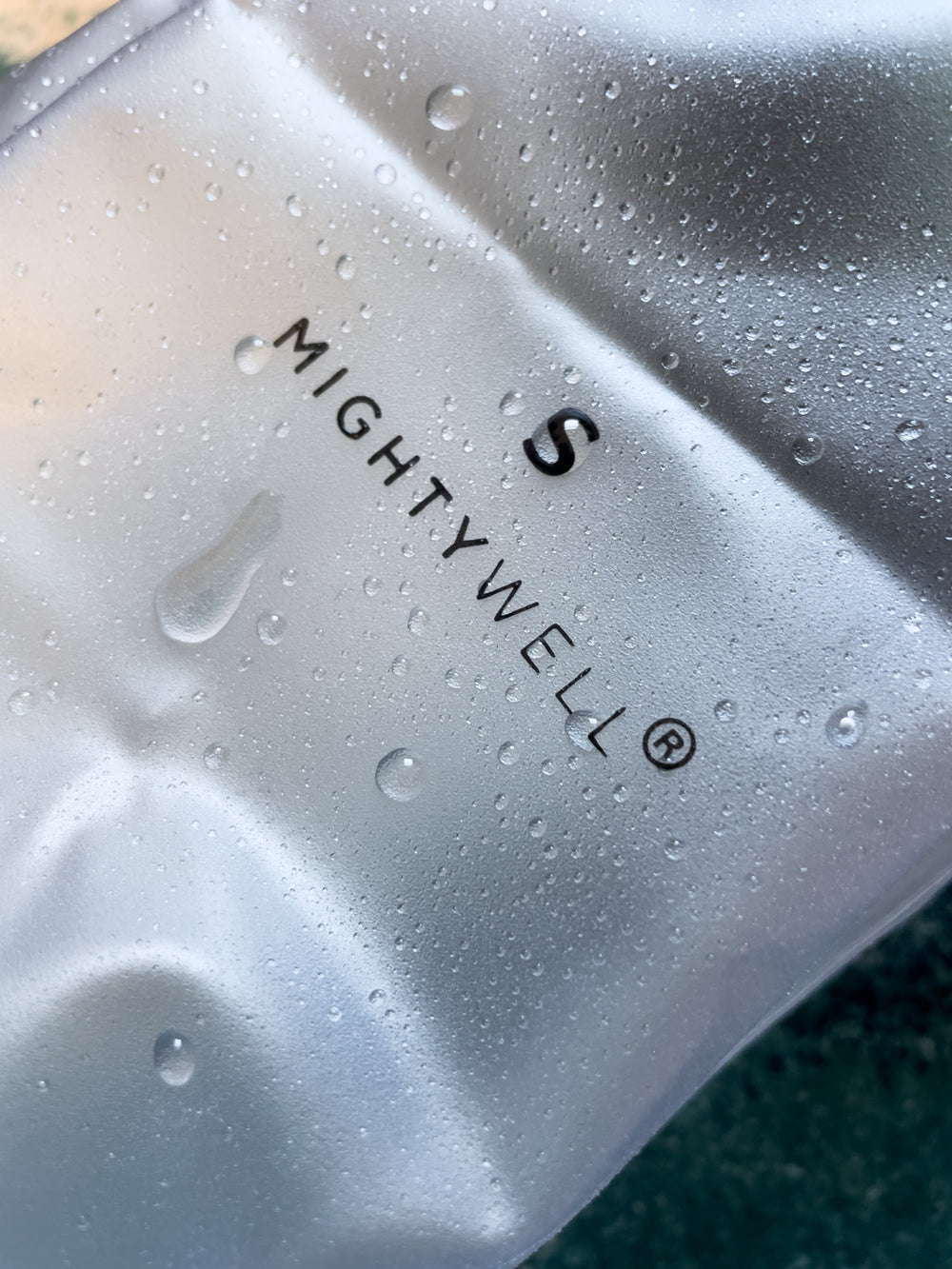Navigating Vascular Access as a Family: a Father-Daughter Journey of Advocacy, Education, and Innovation.
By Emily Levy
This article was originally written for and published in the June edition of Association for Vascular Access®' Intravascular Quarterly. You can see the Full digital magazine here, and a PDF of the original article here. Know that AVA® added the following notation to the top of the publishing: "The following manufacturer-patient interview is a branded article. The information presented in this interview is the opinion of the author(s) and patient(s) and not necessarily the view of the Association for Vascular Access. AVA expects the reader to investigate any manufacturer’s claims regardless of the forum. AVA appreciates the partnership with manufacturers to improve the lives of patients. Intravascular Quarterly invites other manufacturers to present their stories in this way."
By valuing and incorporating the patient's perspective, vascular access stakeholders can deliver meaningful, personalized care aligned with the patient's overall well-being and lifestyle needs. In this insightful patient-interview article, Emma and her father, Mark, discuss their experiences with long-term and acute vascular access. Emma relies on a central line for chronic condition management, while Mark underwent ten weeks of IV antibiotics to treat sepsis from a spinal lipoma abscess. The family graciously shares their challenges, successes, and support systems they leaned on for in and outpatient life with central lines to bring the patient experience to the center of vascular access education. The experiences shared by Mark and Emma underscore the significance of the need for patient education, adopting new product innovations, and access to appropriate patient resources when navigating vascular in outpatient care.

Emma needs frequent infusions to treat her Postural Orthostatic Tachycardia Syndrome (POTS) Dysautonomia, Hereditary Angioedema (HAE), and Mast Cell Diseases. Additionally, Emma's diagnosis includes Gastroparesis and GI dysmotility. She depends on a G-tube alongside her central line to meet her nutritional and hydration needs. POTS is a condition characterized by an abnormal increase in heart rate upon standing, accompanied by symptoms such as dizziness and fatigue1. Hereditary HAE is a rare genetic condition characterized by low levels of dysfunctional C1-INH protein in the blood. A skin reaction often accompanied by hives makes HAE a potentially life-threatening disorder resulting from a genetic defect2. Mast Cell Disease is characterized by the abnormal activation and accumulation of mast cells, immune cells involved in allergic reactions. This can lead to many symptoms, including skin rashes, gastrointestinal issues, respiratory problems, and systemic symptoms3. Emma receives three to five infusions per week of fluids and medications, crucial in managing her symptoms and improving her quality of life. She shared, "I rely on my port for IV fluids and medication treatment, whether at home or in cancer or infusion center."
Before having her port placed, Emma received treatments through peripheral intravenous catheters (PIVC)s three to five times a week. Emma and her care team recognized the significant risk of potential access loss and prioritized vein preservation to ensure the ongoing availability of her treatments. Although her doctor eventually ordered a port, Emma struggled to find a specialist to place the central line. Emma recalls her experience: "Getting connected to a physician who would place my port was difficult, despite recommendations. But once connected, my health history and the port placement plan were well explained and received.” Seeking additional support, Emma reached out to Mighty Well, which led to a pivotal connection with Dr. Gregory Schears, an AVA Member and Mighty Well advisor from the Mayo Clinic. Dr. Schears successfully placed Emma's port, overcoming the reluctance of local specialists due to her complex medical background. Emma's unwavering determination to advocate for the best line for her quality of life ultimately led her to the help she deserved. While Emma’s need for vascular access is long-term, her father, Mark, never expected to switch roles from being a parent-caregiver to needing vascular access himself. One day, Mark became septic, and his medical team and family were unsure why. Testing revealed that he had a lipoma wrapped around his spine that led to an abscess. A lipoma is an expected, non-cancerous growth of fat cells that forms a lump under the skin. Lipomas can occur anywhere on the body where fat cells are present, but they are commonly found on the neck, shoulders, back, and arms4. While lipomas are usually harmless and do not require treatment, he became septic due to the lipoma creating an abscess on his spine. His treatment plan required the utilization of a PICC for ten weeks of IV antibiotic therapy.
Mark shares, "My PICC placement was urgent, limiting my interaction with a vascular access specialist. However, I recognize the importance of their expertise in ensuring safe and effective care...I received treatment in the hospital and later at a [outpatient] cancer center... communicating with my caregivers over the phone made it difficult to understand my treatment plan fully." Mark acknowledges that Emma's lived experience with vascular access, combined with prior knowledge from a manufacturer and AVA's patient education partnership, in addition to the publication Ultimate Guide to PICCs for Patients and Caregivers6, helped to ease his transition into outpatient life with a PICC. He said, “Their resources provided me with valuable insights into caring for my central line. Having a support system was crucial during this challenging time." Emma continues, "Mighty Well and AVA have empowered me to be an advocate for myself and my vascular access care. Their tools and resources have given me the skills to advocate effectively. Not only do Mighty Well products empower me, but their dedicated team has truly made an investment in my life." She encourages patients and caregivers to educate themselves and utilize the available resources distributed by Mighty Well and AVA’s partnership.
One of the primary concerns for Mark and his family revolved around managing his lumens at home while carrying out his daily activities. They were worried that the lumens could become entangled with household items or that their dog might unintentionally pull on the lines, leading to dislodgement or infection. He shares, “A stockinette was given upon discharge from the hospital. However, no lumen caps were provided. It was explained that the hospital did not use them, and they did not provide any value. This was a concern my family had due to the risk for infection it posed.” Mark was frustrated by the stockinette given by the hospital to cover his PICC and contain the lumens and extension tubing. As a replacement for stockinette, Emma helped Mark acquire Mighty Well’s innovative textile-based secondary catheter securement device, the PICCPerfect® Pro. The PICCPerfect® Pro offers several advantages to PICC care and management in clinical settings, including potential cost and time savings. The PICCPerfect® Pro is used to store the external lumens of the catheter. When used correctly, PICCPerfect® Pro supports, stabilizes, and improves the care and cleanliness of the catheter and reduces the need to use tape on the skin.
In a Quality Initiative from a regional health center in Iowa, the clinicians reported improved dressing integrity compared to the standard of care, reduced frequency of dressing changes, and decreased catheter-related complications after implementing the PICCPerfect® Pro. These benefits were assessed by comparing variables such as dressing lifespan, preemptive dressing changes, and complications like dislodgement, infiltration, or infection pre- and post-implementation5.

Mark enthusiastically shares his experience with the PICCPerfect® Pro, saying, "It was an awesome product! The cover was discrete and size-inclusive, which was important for me as a large male. It provided a great layer of protection and stayed securely in place." Reflecting on ineffective alternatives, Mark says, "The stockinette given by the hospital continually rolled up and compromised the dressing. This caused bleeding and dressing issues. In contrast, the PICCPerfect® Pro cover kept my line safe and secure, ensuring longer-lasting dressings." Emma's motivation to assist her dad in obtaining a PICCPerfect® Pro stemmed from her frustration with vascular access and infusion specialists suggesting he use a cut-off sock to protect his life-saving device. Emma explains, “Healthcare professionals recommend patients cut up socks, a useless product to cover it like a stockinette to ‘protect’ their lines. Those items are false advertisements. It would be useful and resourceful and, in the patient and doctors’ best interest, to distribute a product that can improve the patient experience.” Emma and Mark's experience highlights the need for innovative additional PICC securement products that address the everyday challenges patients and clinicians face. Their story emphasizes the importance of finding solutions that improve the overall experience of managing vascular access, meeting the needs of both patients and clinicians.
Emma and Mark's stories underscore the significance of patient-centered care and the power of advocacy through being informed, consumers. In addition, their journeys highlight the importance of patient education, product innovation, and robust support systems in navigating long-term and acute vascular access complexities. By sharing their experiences, Emma and Mark have provided invaluable insights that can inspire clinicians, industry, and patients alike to enhance the quality of care in vascular access.
Sources:
- Postural Orthostatic Tachycardia Syndrome (POTS). Cleveland Clinic. September 9, 2022. Accessed May 25, 2023. https://my.clevelandclinic.org/health/diseases/16560-postural-orthostatic- tachycardia-syndrome-pots
- (2020, September 28). Understanding Hereditary Angioedema. American Academy of Allergy Asthma and Immunology. Retrieved May 25, 2023, from https://www.aaaai.org/tools-for-the- public/conditions-library/allergies/understanding-hereditary-angioedema
- Systemic Mastocytosis. Mayo Foundation for Medical Education and Research. November 20, 2020. Accessed May 25, 2023. https://www.mayoclinic.org/diseases-conditions/systemic- mastocytosis/symptoms-causes/syc-20352859
- Lipoma. Mayo Foundation for Medical Education and Research. February 11, 2022. May 25, 2023. https://www.mayoclinic.org/diseases-conditions/lipoma/symptoms-causes/syc-20374470
- Gomez, M. D. M. (2023, May 12). PICCPerfect® Pro Case Study: Read more about our Quality Initiatives Study Results with a Regional Health Center in Iowa. Mighty Well. Retrieved May 25, 2023, from https://mighty-well.com/pages/research
- Cruz, K., RN, BSN, Levy, E., & Gomez, M. D. M. (2022, February 24). Ultimate Guide to PICCs for Patients and Caregivers: Reviewed by the Association for Vascular Access (AVA). Mighty Well. Retrieved May 25, 2023, from https://cdn.shopify.com/s/files/1/1356/3483/files/Mighty_Well_s_ Ultimate_Guide_to_PICCs_Approved_by_AVA_2.pdf?v=1679586385















Leave a comment